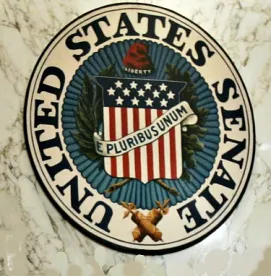On March 18, 2020, the Senate passed the “Families First Coronavirus Response Act,” which contains provisions related to mandatory paid leave for employers with fewer than 500 employees. A summary of the bill, which is supposed to be effective within 15 days of enactment, is below.
The bill creates a new paid leave benefit called “emergency paid leave.”
Reasons for Leave: Employees who are eligible for “emergency paid leave” are those individuals who are unable to work due to one of the following conditions or situations: (i) the employee is subject to a federal, state, or local isolation or quarantine order; (ii) the employee has been advised by a health care provider to self-quarantine; (iii) the employee is experiencing symptoms of coronavirus and seeking a medical diagnosis for the symptoms; (iv) the employee is caring for an individual who is subject to a quarantine order or who has been advised to quarantine by a health care provider; or (v) the employee is caring for a child because the child’s school or place of care has been closed due to COVID-19.
Eligibility Conditions: Eligible employees do not have to be employed for a certain length of time in order to be eligible for the paid leave provisions.
Amount of Leave: The bill mandates paid leave of up to 80 hours for full-time covered employees. “Full-time” is not defined for purposes of the bill.
Amount of Pay: Pay is at an employee’s regular rate if the employee takes leave to treat his or her own health issues related to COVID-19 or if the employee is subject to a quarantine or isolation order. For any other qualifying leave reason, the bill mandates paid leave at two-thirds of an employee’s regular rate. Part-time employees are entitled to leave for the hours they work on average during a two-week period, and are entitled to pay at their regular rate or two-thirds of their regular rate, depending on the reason for leave. Paid leave is capped at an amount of $511 per day and $5,110 in the aggregate if the employee takes leave to treat his or her own health issues related to COVID-19 or if the employee is subject to a quarantine order. For any other qualifying reasons for leave, paid leave is capped at $200 per day and $2,000 in the aggregate.
Exemptions: The bill allows the Department of Labor to exempt employers with fewer than 50 employees if compliance with the paid leave provisions would jeopardize the viability of the business as a going concern.
Notice: The Department of Labor is supposed to provide a model notice that will be furnished to employees regarding emergency paid leave within seven days of the bill’s enactment.
Other Provisions: The paid emergency leave is in addition to any other paid sick leave provided by a covered employer. Employers cannot retaliate against an employee who takes advantage of emergency paid leave or who has filed a complaint related to the taking of such leave. Employers also cannot force an employee to find a replacement to cover the leave.
The bill expands the existing provisions of the Family and Medical Leave Act (FMLA) to provide for “public health emergency leave.”
Reasons for Leave: Eligible employees are those unable to work (or telework/work from home) due to a need to care for the employee’s child if the child’s school or place of care has been closed because of a declared emergency by a federal, state, or local government authority.
Eligibility Conditions: The leave applies to all employees (full-time and part-time) who have been employed by an employer for at least 30 days. This appears to be the only eligibility requirement under the expanded FMLA provisions.
Amount of Leave: The bill provides employees with up to 12 weeks of leave. The FMLA leave entitlement goes into effect only after 10 days of unpaid leave. During the first 10 days of leave, the employer can mandate that employees substitute accrued vacation leave, personal leave, sick leave, or any other form of paid time off. The employer can also mandate that employees use the two weeks of emergency paid leave (described above) that is otherwise required to be provided under the bill.
Amount of Pay: The bill provides for 10 weeks of paid leave at a rate of two-thirds of the employee’s pay at the employee’s “regular rate,” and the amount should reflect the number of hours the employee would otherwise be normally scheduled to work. In any event, the amount of paid leave cannot exceed $200 per day and $10,000 in the aggregate during the FMLA leave period.
Exemptions: The bill provides a potential exemption for employers with fewer than 50 employees if the Department of Labor determines that providing the paid leave would jeopardize the viability of the business as a going concern. The bill also exempts employers with fewer than 50 employees from any private right of action the employer may face as a result of not complying with the leave mandates. This effectively means that employers with fewer than 50 employees are not likely to face significant liability for noncompliance with the expanded FMLA provisions.
The bill also provides that employers with fewer than 25 employees that provide emergency FMLA leave are exempt from the FMLA’s job restoration requirements if the following conditions are met: (i) the employee’s job position does not exist due to economic conditions caused by the coronavirus; (ii) the employer makes reasonable efforts to restore the employee to an equivalent position; and (iii) an equivalent position does not become available in the following year.
The bill creates a system of “refundable tax credits” for employers that make emergency paid leave payments or public health emergency leave payments.
Amount of Credit: The credit is a dollar-for-dollar refundable tax credit on any covered payments made by an employer. The amount of the credit may be increased by an employer’s health plan expenses that are allocable to leave wages (i.e., employer-paid premiums to continue group medical coverage for eligible employees). The credit is capped in the following amounts: $511 per day per employee and $7,156 aggregate per employee for emergency paid leave, and $200 per day per employee and $10,000 aggregate per employee.
Withholding and Taxation: Normal withholding rules apply to leave payments for income tax purposes and employee Federal Insurance Contributions Act (FICA) tax purposes. Leave payments are not subject to employer OASDI (Social Security tax), but are subject to employer Medicare tax (although such liability will be offset by the tax credit that an employer will receive).
Application of Credit: The tax credit is applied against the employer share of FICA taxes. If the amount of the credit exceeds an employer’s FICA tax liability, then the excess will be refunded to an employer.
The president is expected to sign the bill into law soon. We will keep you posted on further developments.





 />i
/>i

